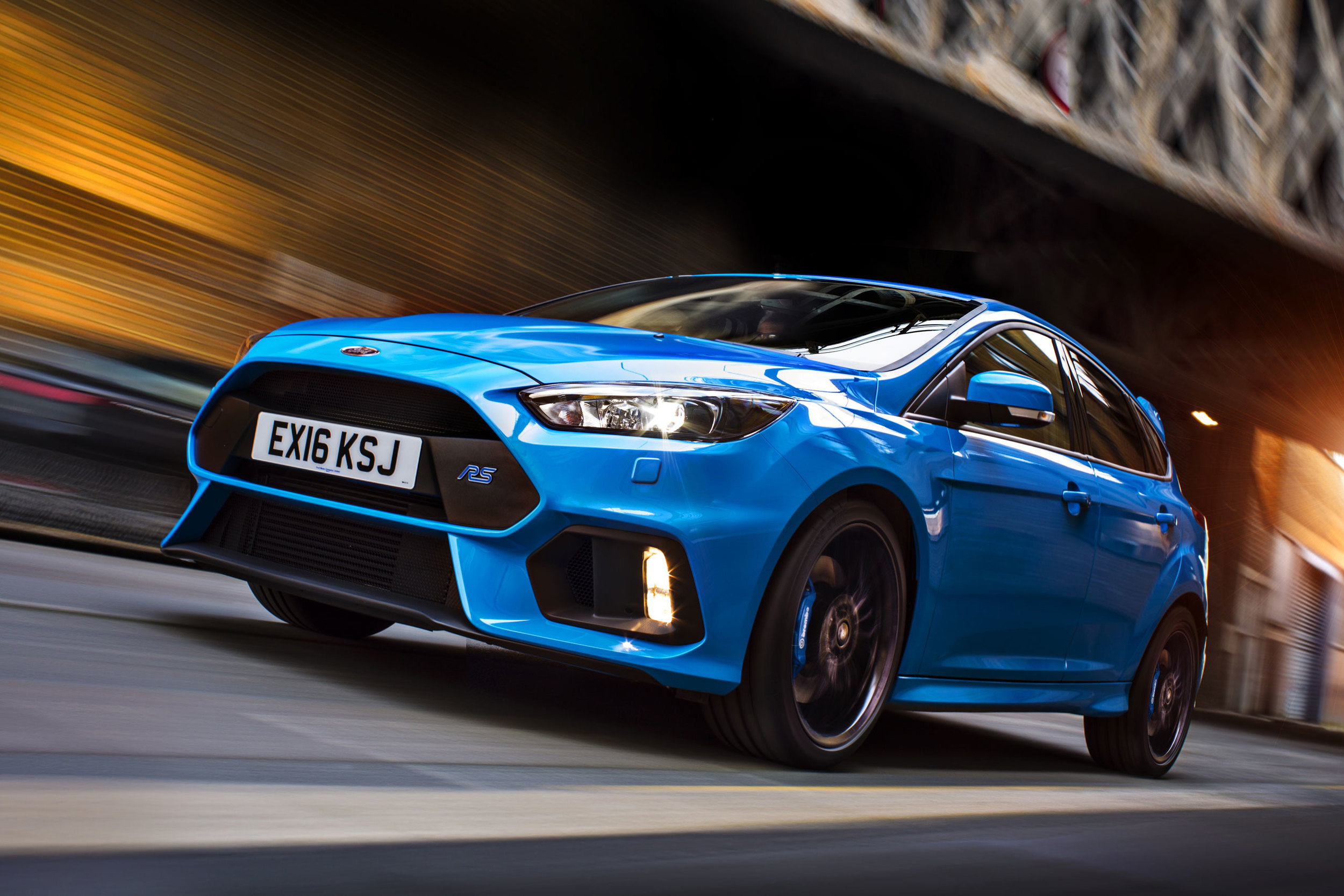
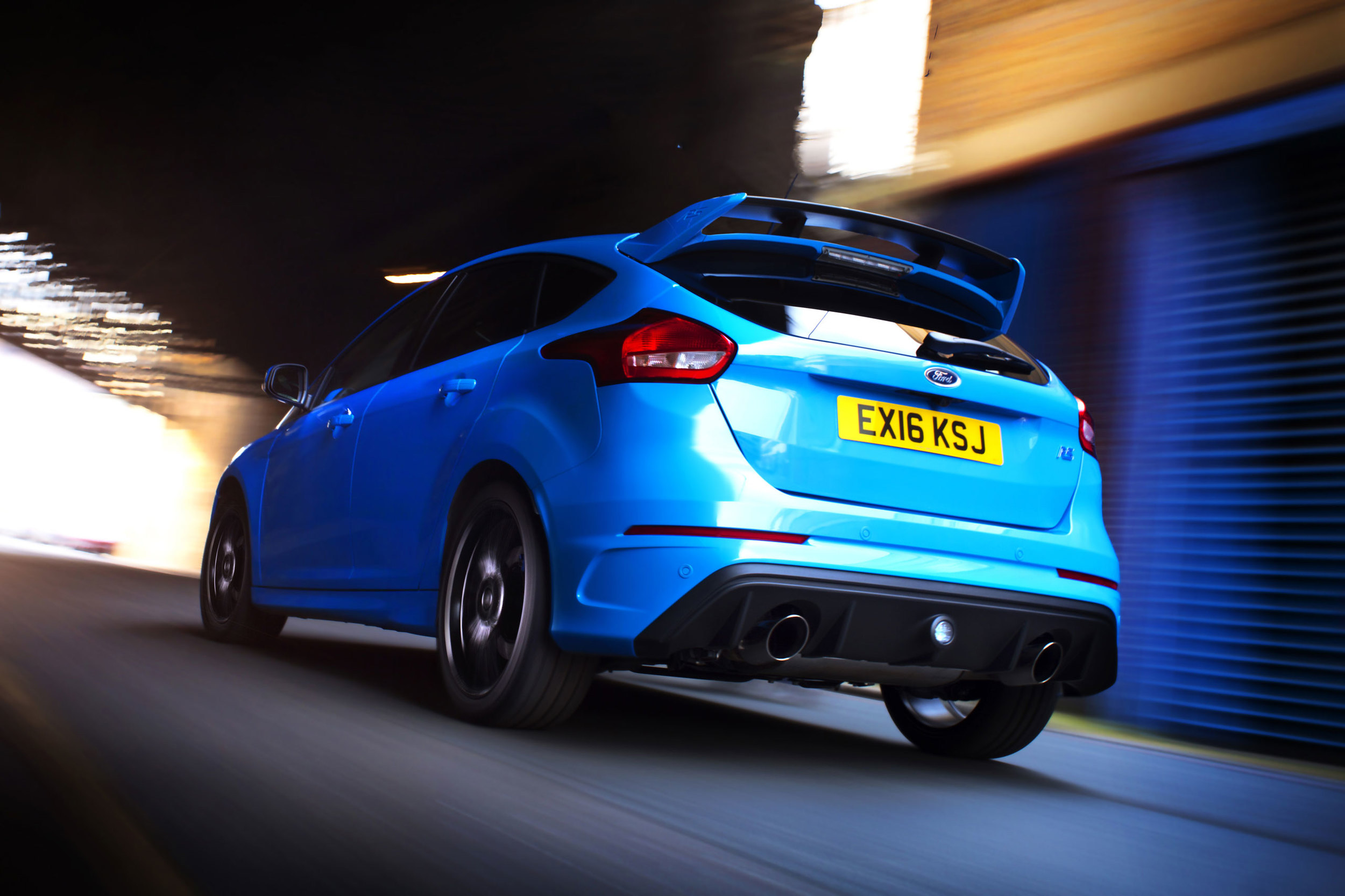
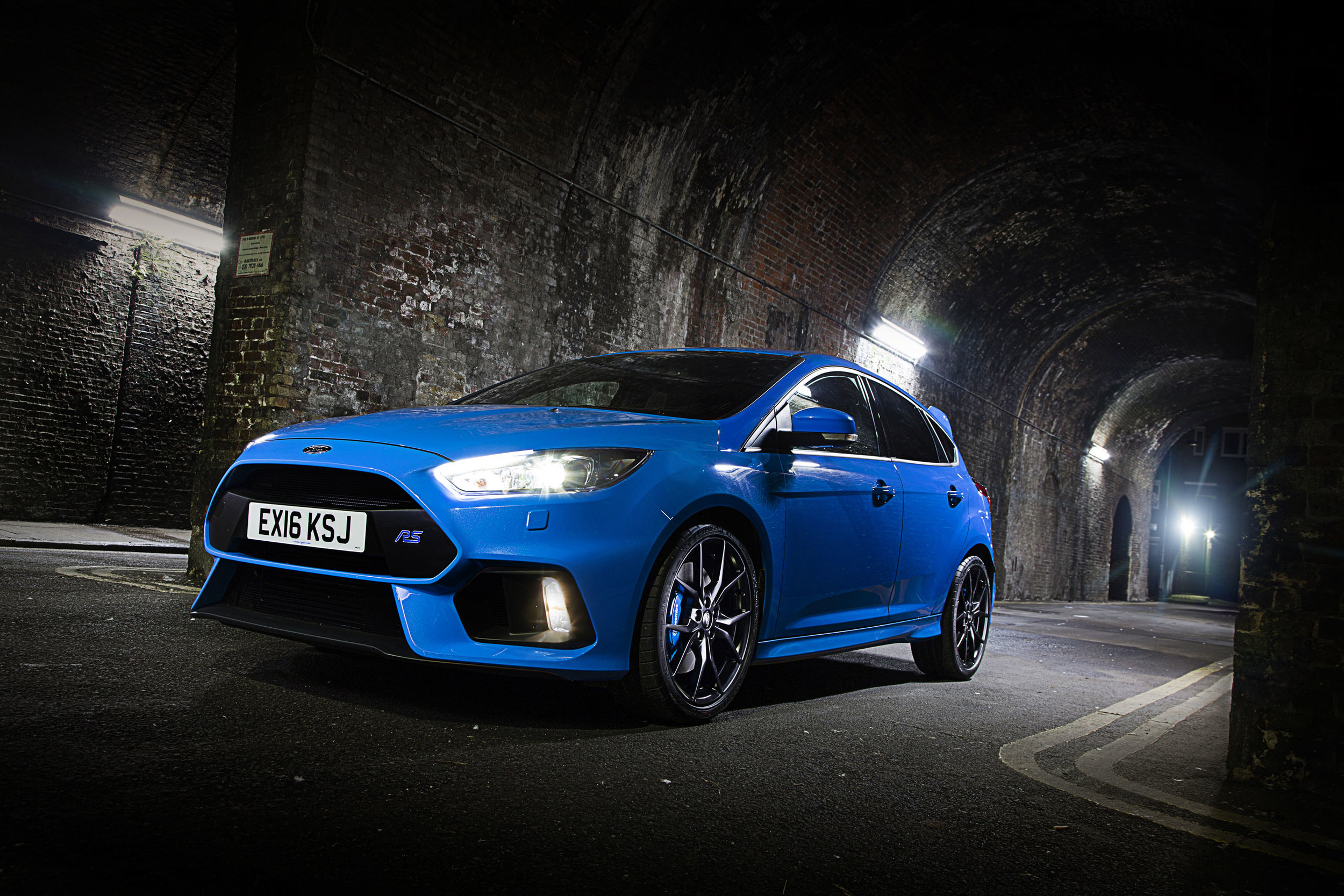
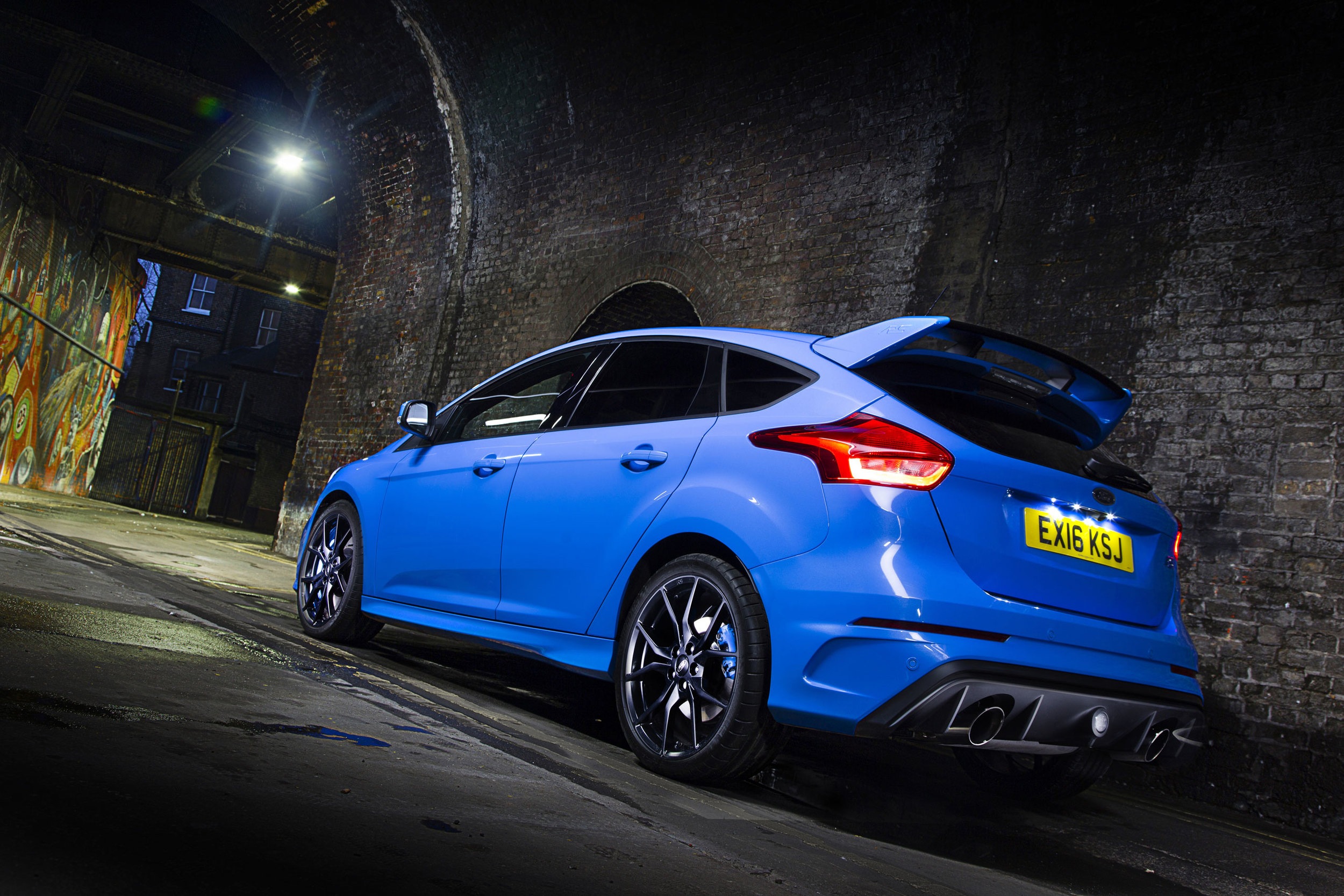

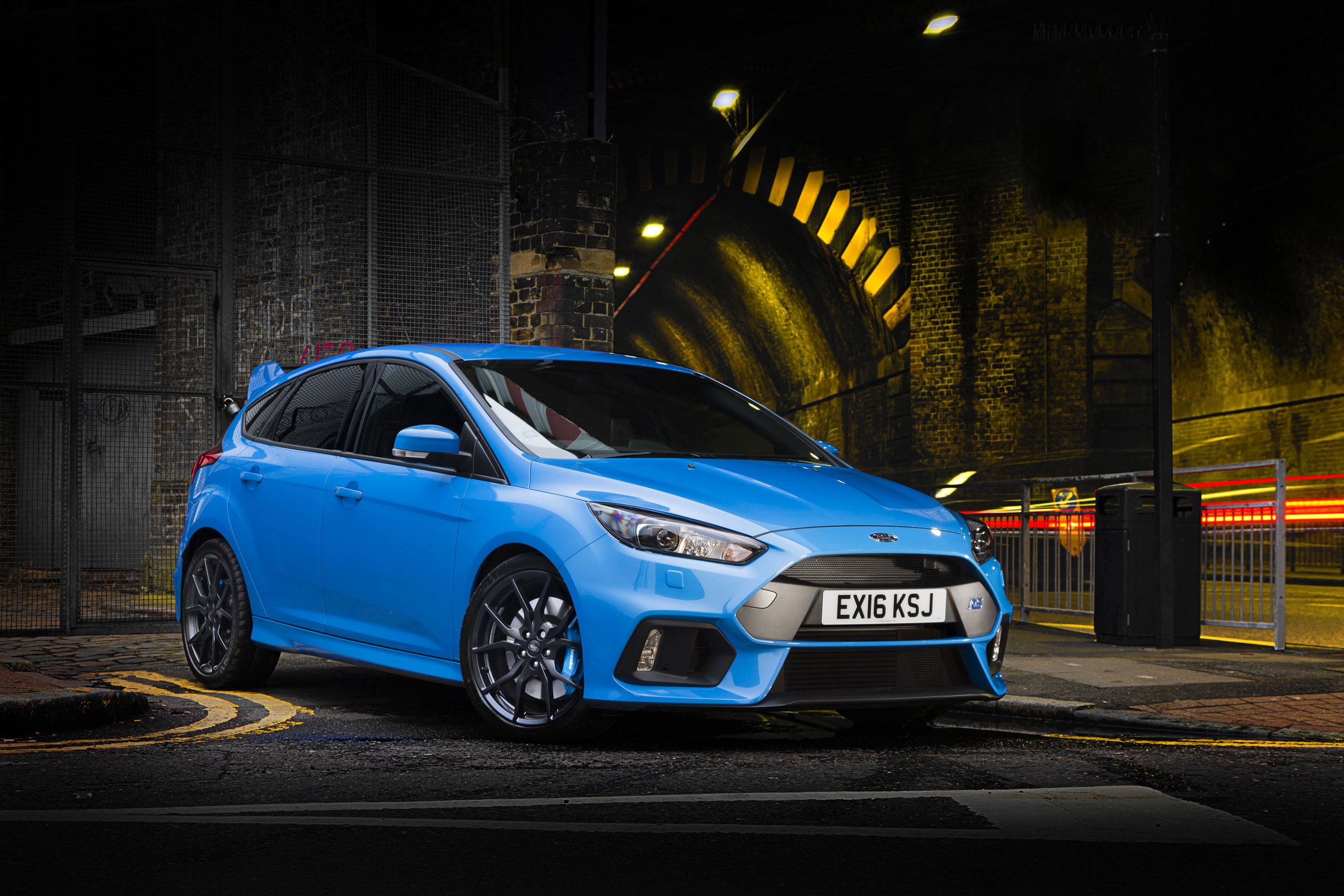
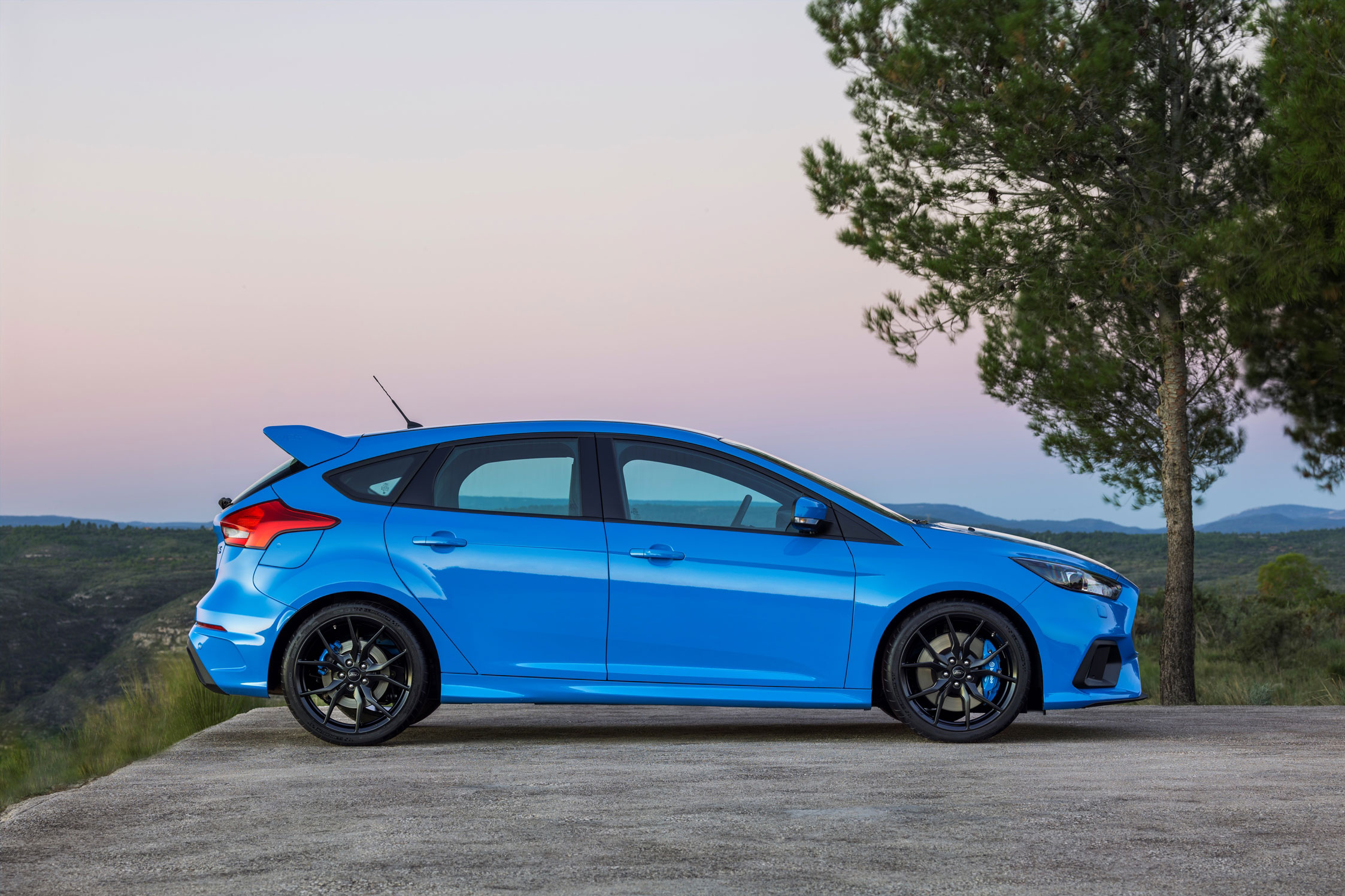
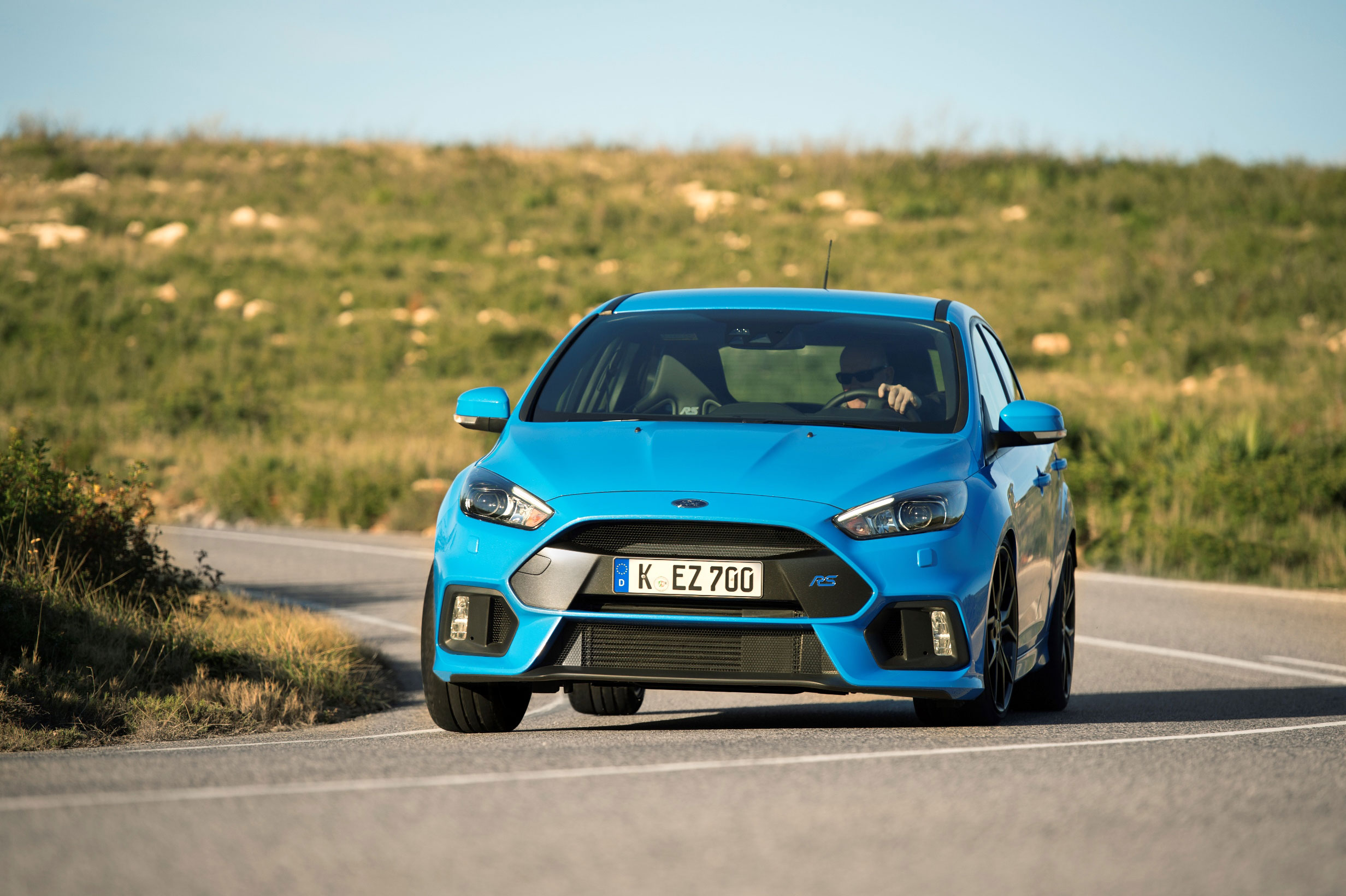

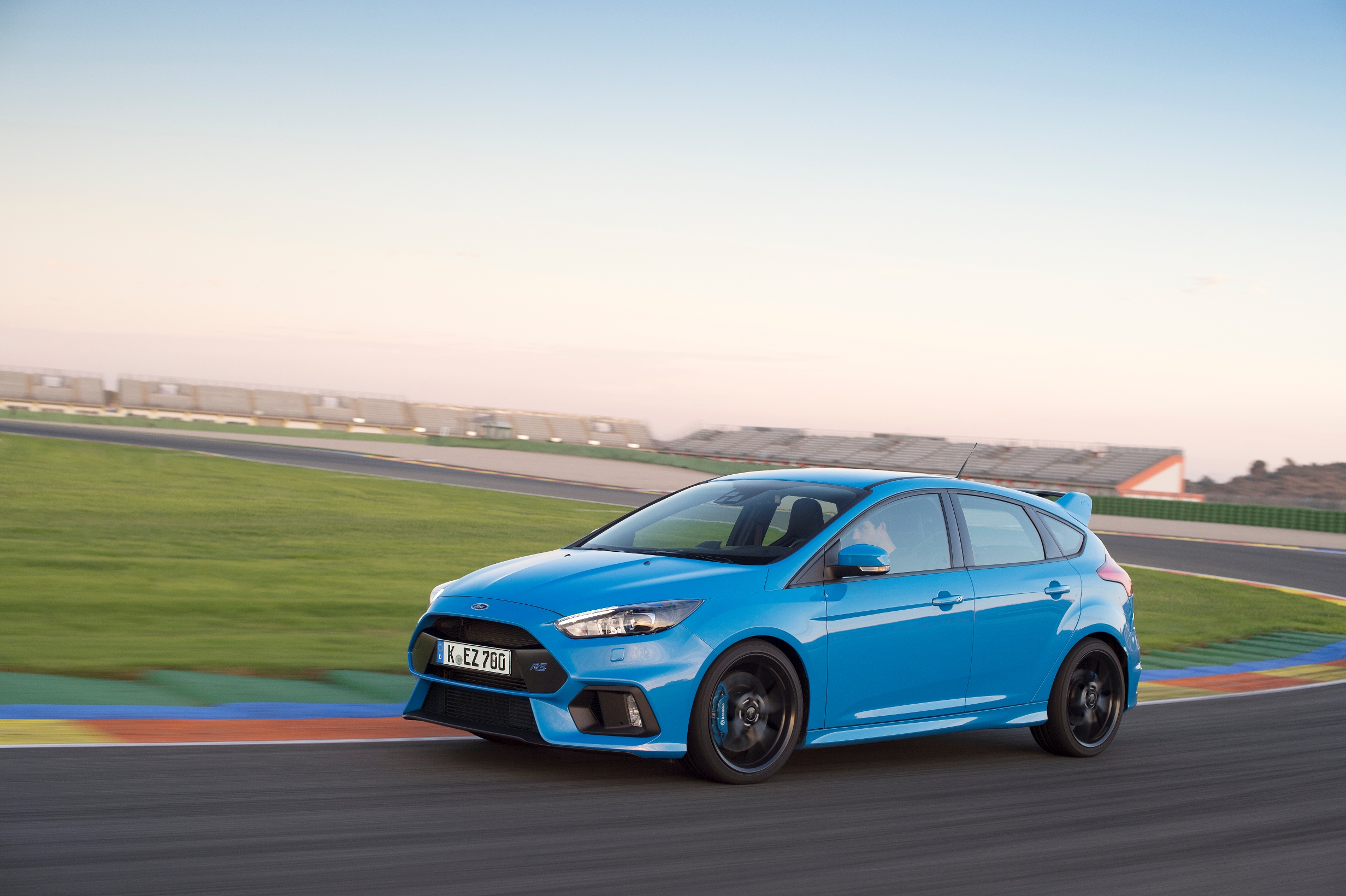


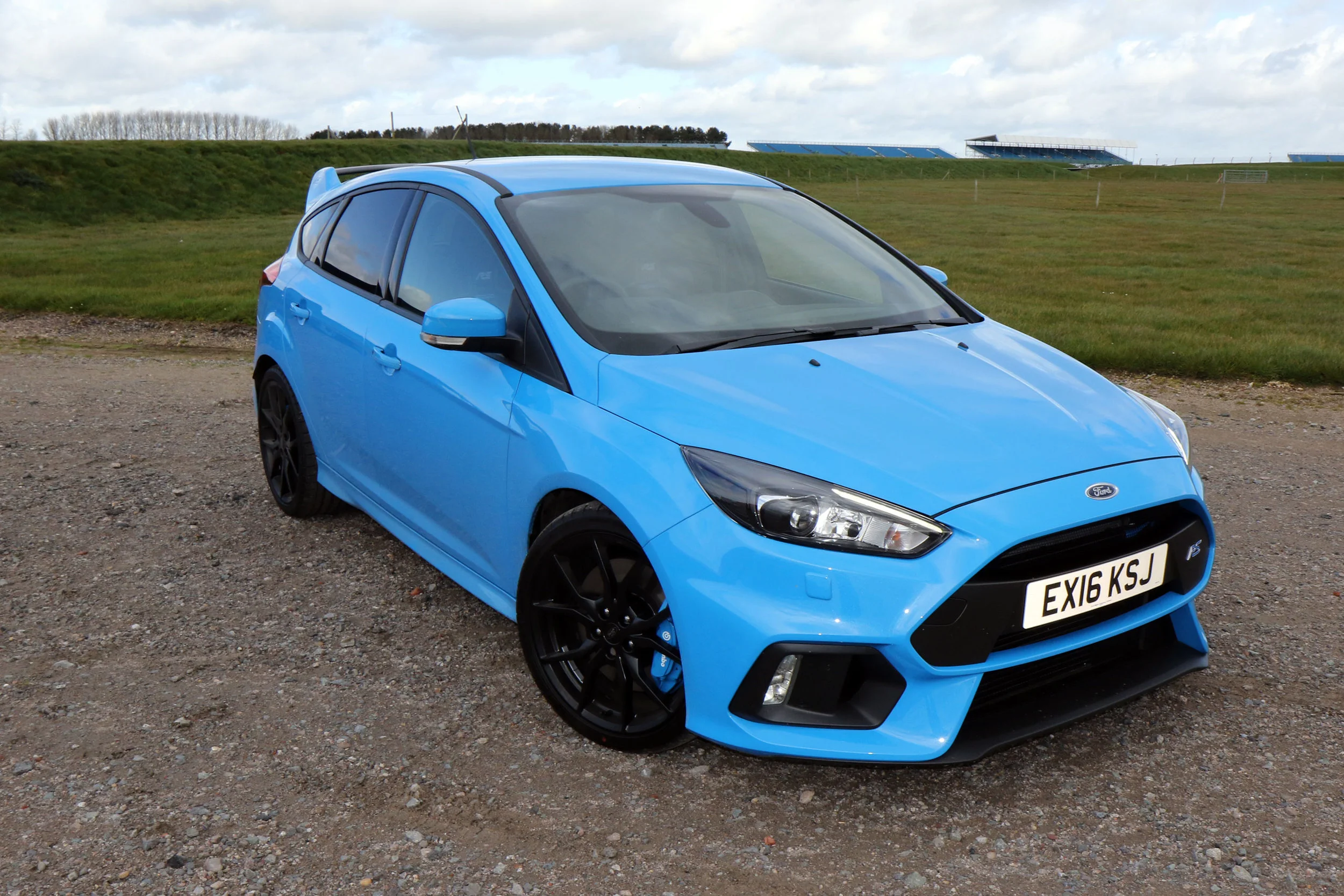
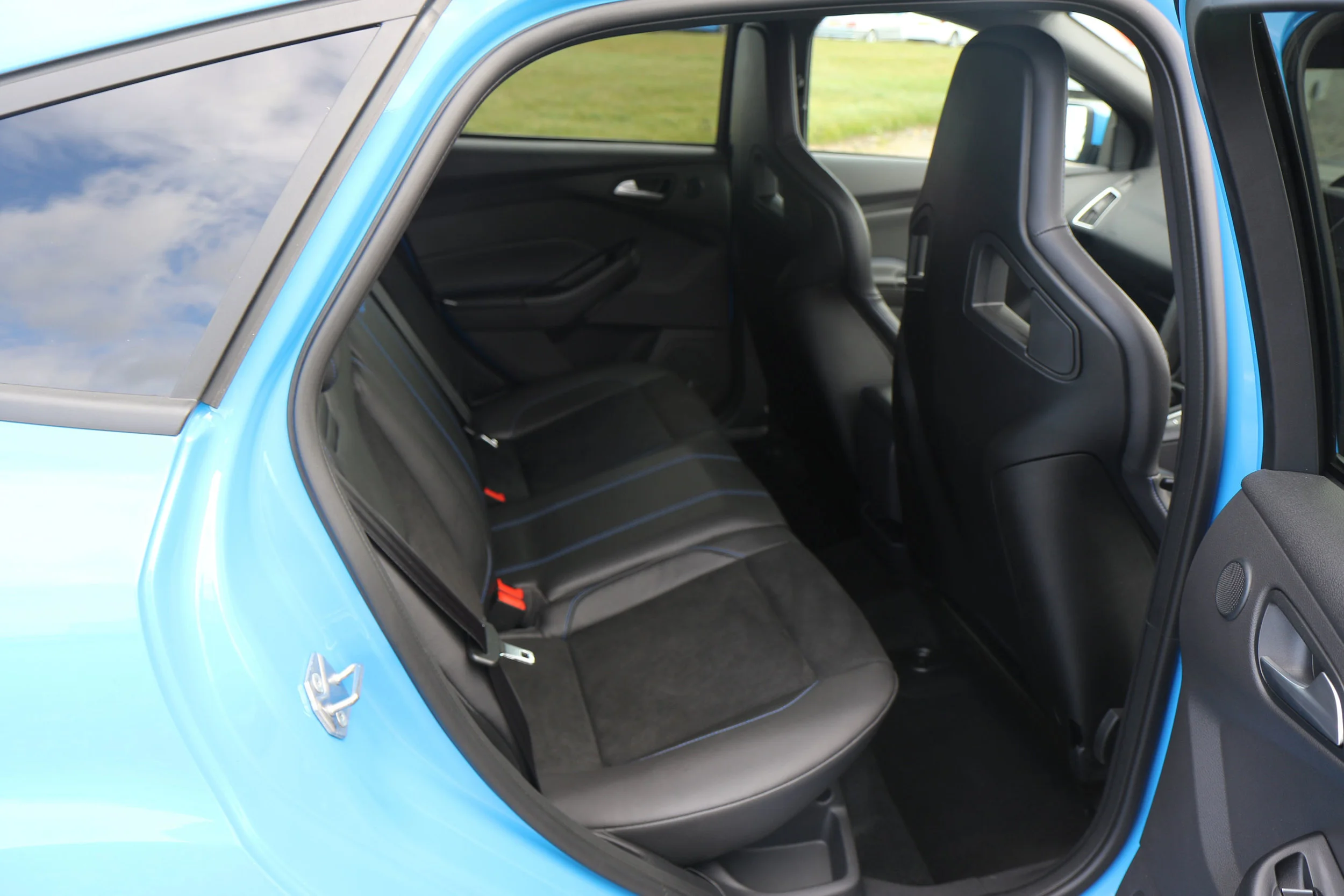
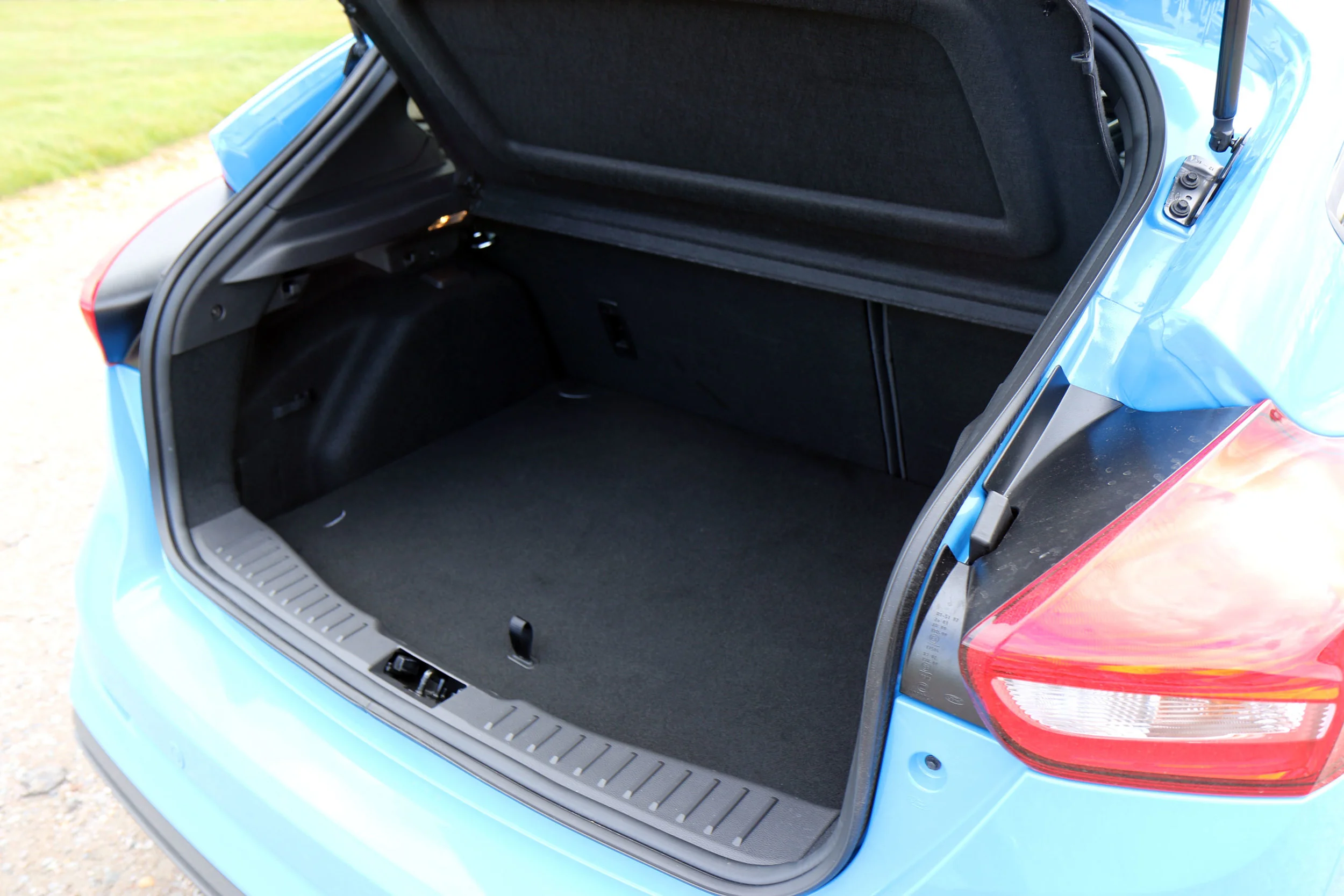
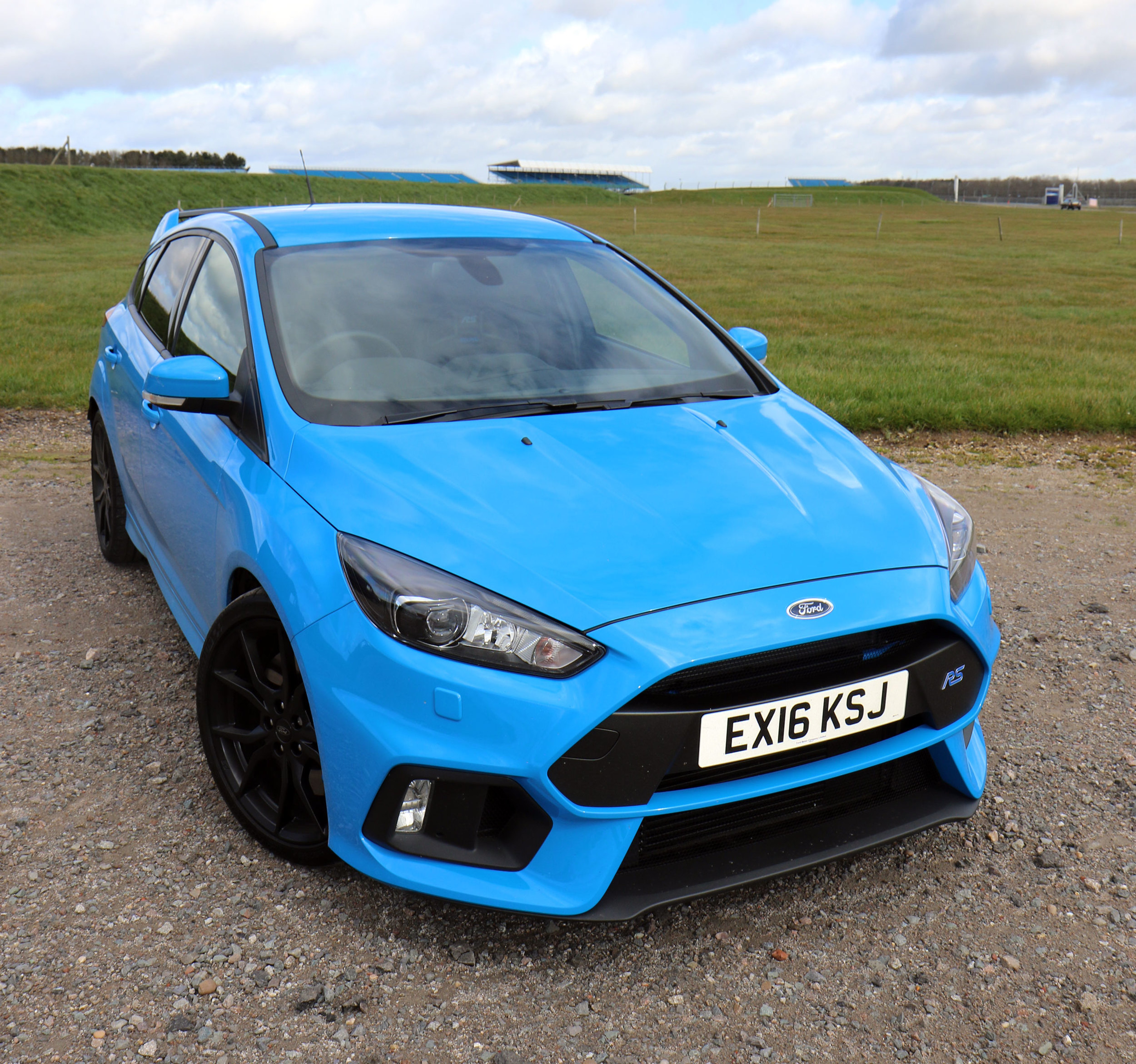

The Ford Focus RS is one of the most hotly anticipated performance cars of the decade, but can it live up to the hype asks Chris Pickering?
The arrival of a new Fast Ford is always guaranteed to get petrolheads chattering with excitement. In the case of the Focus RS, however, that anticipation has built up to a full-on frenzy. With 350 PS (345 bhp) and a top speed of 165 mph it promises to be one of the most potent hot hatches ever.
Of all the things that define the new RS, it’s perhaps the all-wheel drive system that’s made the most headlines. Ford famously stuck with front-wheel drive for the previous generation Focus RS. More recently, Honda has done the same with one of the RS’s closest rivals, the Civic Type R. So make no mistake, the decision to go with a full complement of driven wheels is a big deal.
It’s not the work of a moment, either. A huge amount of development work has gone into producing a thoroughly re-engineered package that feels like more than just a go-faster Focus. Or at least it does on the move. Externally, the new RS is quite discrete, with a well-judged blend of sophistication and aggression. Park it next to a Focus ST and the changes – including a variety of new air intakes, a larger rear wing and a fully functional diffuser – would no doubt soon become apparent. In isolation, however, it looks quite restrained – at least in comparison to its bar-brawling predecessor.
Inside it’s much like any other Focus, barring a couple of extra gauges and the addition of some very serious-looking seats. Our test car came with the optional shell-back Recaros, which provide plenty of support but fairly minimal padding. Initially they also feel quite high, although the driving position overall is good, with a decent range of adjustment.
One of the tricky things with the Focus RS is what to compare it against. If you want four-wheel drive and a similar level of performance then the majority of other options are substantially more expensive. True, the Ford’s cabin can’t match those premium brands for style or opulence, but neither would you expect it to in a car that packs so much performance for £10,000 less. When it comes to the driving experience, however, the tables turn in the Blue Oval’s favour.
Thumb the keyless start button and the 2.3-litre Ecoboost unit springs to life. It’s based on the engine found in the new four-cylinder Mustang, but it’s been substantially re-engineered. Changes include a new cylinder head, an uprated twin scroll turbocharger and the largest intercooler that Ford could physically fit.
From the outside the new engine has a satisfying rasp to it when worked hard. Inside it’s more of a staccato warble – slightly reminiscent of the fast Subarus – punctuated by a stream of pops and bangs from the exhaust. You get the impression someone at Ford thought long and hard about the level of theatre they wanted to engineer into this car. The results are spot on – enough to amuse, without waking up the neighbours.
Predictably, there’s huge performance on tap. The launch control system is particularly savage, catapulting the car from 0-62 mph in what feels like less than Ford’s official claim of 4.7 seconds. There’s plenty of urge from right down in the rev range too, plus excellent throttle response by turbo standards. Keep your foot down and the power builds with impressive linearity; it does tail off slightly at the top end, but not before you’ve gained a rather broad grin (and possibly several fixed penalty points).
Even on rural Oxfordshire’s damp, bumpy B-roads the Focus RS puts its power down with real finesse. It’s not just a point and squirt machine, either. Thanks to that clever transmission, it feels more like a rear-wheel drive car when you’re pressing on; albeit one with a substantial safety net and vast reserves of traction.
Sharp steering allows you to place the car with pinpoint precision. At just two turns lock-to-lock it’s very direct, but it never feels excessively nervous or darty. There is some real feedback to be had too, although like most electric power steering systems you need to be putting quite a lot of load through the tyres before it really starts to communicate.
On the track
No modern performance car would be complete without a bewildering array of drive modes and the Focus RS is no exception. Even in the Normal setting it feels quite taut, with a distinctly firm low speed ride and eager responses. Switching to Sport changes the all-wheel drive system calibration, adds weight to the steering, sharpens the throttle and opens up the exhaust valve. By default, it leaves the electronic stability control (ESC) in its baseline setting, but this can be switched to its own Sport mode or disabled altogether. Ford was keen to point out that off truly means off – something that it isn’t always the case with its competitors.
Beyond that comes Track mode, where (somewhat confusingly) all the different parameters are set to Sport. Interestingly, it’s the only mode where the two-stage dampers are switched into their firmer setting and Ford says this is only intended for billiard table smooth race tracks. Around the lumps and bumps of the Nürburgring the engineers say it’s best left in Sport.
And so we come to the Focus RS’s party piece: Drift mode. This actually puts the dampers and steering back to their baseline setting and keeps the electronic safety net in place. The car’s torque vectoring system uses a pair of clutch packs to control drive individually to the rear wheels. This is constantly adjusted in all modes to reduce understeer and improve traction. Put your foot down in Drift mode, though, and it sends around 70 percent of the torque to the rear drive unit, some 90 percent of which is then diverted to the outside wheel. When the electronic brain deems appropriate, the torque bias is eased forwards to help stabilise the slide, along with help from a separate brake-based torque vectoring system used on the front axle.
So what’s it like? Well, Drift mode does work quite well, but it feels a little contrived – almost as if you’re providing inputs to a computer program. You keep your right foot planted and leave the car to do most of the work. It’s a great demonstration of the Focus RS’s underlying capabilities, but it loses its novelty value quite quickly.
In the other three modes, the car is still constantly shuffling torque, but it always feels resolutely and deliciously analogue.
There’s as much adjustability as you’d realistically want on a track day, with good front end bite, minimal understeer and plenty of options to provoke it into mild, controllable oversteer. Even with the ESC in Normal mode you get a little bit of slip from either end before it’s gently reined in, while Sport allows you to hold quite significant angles. Put simply, the Focus RS doesn’t need any gimmicks.
Overall this is a performance car with a real breadth of talent. In terms of ride and refinement it does feel somewhat more hardcore than, say, the Focus ST. It will also cost a little more to run – Ford claims 36.7 mpg, but we saw mid-twenties across a day of B-road driving, while CO2 comes in at 175 g/km. That’s a small price to pay in the context of what the Focus RS can do, though. To pack so much involvement and so much sheer performance into a car costing just £30,000 is a real achievement.
